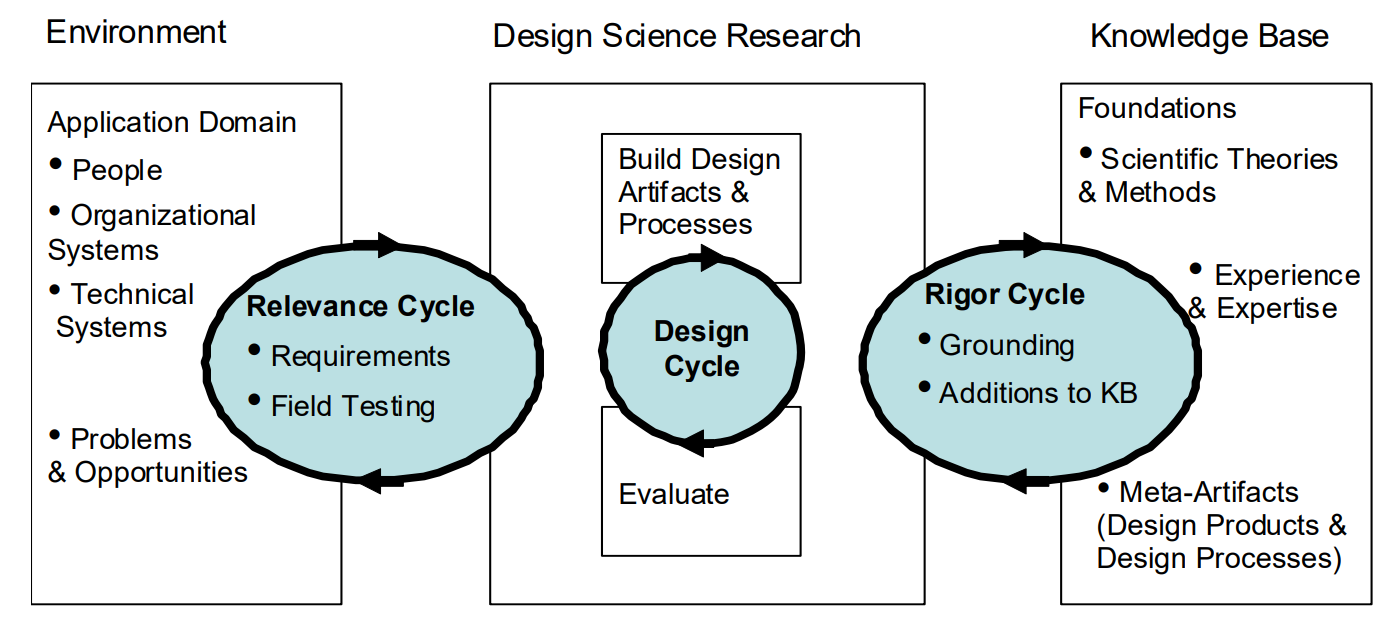Agile Design Science for WebXR based virtual learning rooms
- Type: Thesis
- : Master
-
Lecturer:
Luca Bennardo
Problem Description
The current state of WebXR technologies presents opportunities to revolutionize collaborative learning experiences through immersive virtual learning rooms (VLRs). However, the successful integration of WebXR into educational settings hinges on addressing significant usability challenges that currently hinder widespread adoption and effective learning outcomes. This thesis investigates the current state-of-the-art in WebXR frameworks for VLRs and possible usability challenges for users, focusing specifically on intuitive navigation, interaction possibilities, and accessibility for diverse learners.
Goal of the Thesis
This thesis aims to address VLR adoption challenges using an agile and lightweight Design Science Research approach as illustrated in Figure 1.

You will be…
- Conducting a literature review regarding existing VLRs and general learning principles (Mayer, 2017); identifying specific pain points and areas for improvement.
- Developing and evaluating design recommendations for accessible and interactive WebXR VLRs. This may involve exploring innovative interaction techniques and accessibility features, such as alternative input methods, adaptive interfaces and gamification.
- Creating a prototype WebXR VLR incorporating the proposed design recommendations, demonstrating the feasibility of the proposed solutions.
- Planning an evaluation of your prototype by sketching a study or experiment.
Requirements
- Interest in learning processes in general and motivated to improve them
- Basics about the command line and git capabilities
- Willingness to try out new programming languages and tool stacks
- Nice to have: Knowledge about containers and/or cloud skills (AWS/GCP/kubernetes)
Sources
- Weiß, T., Kirch, P., Büst, M., Schindler, S., & Pfeiffer, J. (2023). Eine interdisziplinäre Kooperation in der Hochschullehre mit Hilfe der virtuellen Realität.
- Maclntyre, B., & Smith, T. F. (2018). Thoughts on the Future of WebXR and the Immersive Web. In 2018 IEEE international symposium on mixed and augmented reality adjunct (ISMAR-Adjunct), 338-342
- Cleto, B., Carvalho, R., & Ferreira, M. (2021). Students’ perceptions exploring a WebXR learning environment. In International Conference on Design, Learning, and Innovation, 230-241
- Liu, Y. T., Cheng, P. Y., Shih, S. P., & Huang, T. Y. (2023). MetaClassroom: a WebXR-based hybrid virtual reality classroom. In 2023 IEEE International Conference on Advanced Learning Technologies (ICALT), 280-281.
- Hevner, A. R. (2007). A three cycle view of design science research. Scandinavian journal of information systems, 19(2), 4.
- Mayer, R. E. (2017). Using multimedia for e‐learning. Journal of computer assisted learning, 33(5), 403-423.
- https://hubsfoundation.org/
- https://needle.tools/
